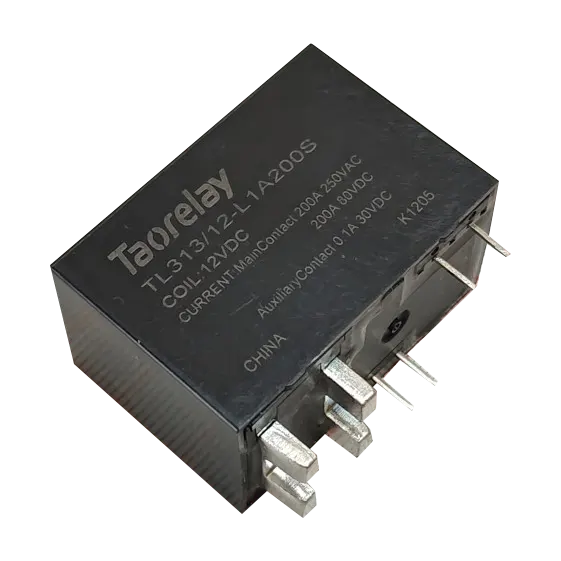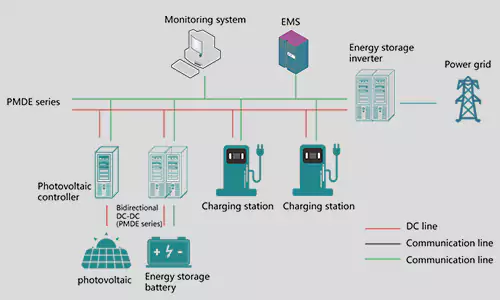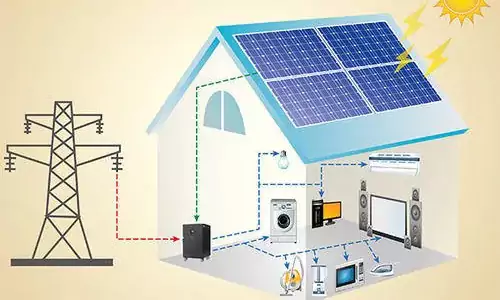A relay is an electromagnetic switch used to control the opening or closing of circuits. It allows a low-power control signal to manage high-power circuits, providing isolation and control. A typical relay consists of the following components:
- Coil: Generates a magnetic field when energized.
- Contact Set: Opens or closes the circuit based on the magnetic force.
- Core and Armature: Converts electromagnetic force into mechanical movement.
- Enclosure: Protects internal components and provides insulation.
Relays are widely used in power systems, communication devices, automation equipment, and household appliances for signal transmission, power amplification, and protection.
Types of Relays
Relays can be categorized based on their working principles and applications as follows:
1. Electromagnetic Relay
- Working Principle: Uses electromagnetic force generated by the coil to move the armature and actuate the contacts.
- Features: Simple, reliable, suitable for low-frequency and low-speed operations.
- Applications: Automotive circuits, control devices.
2. Solid-State Relay (SSR)
- Working Principle: Uses semiconductor components (e.g., thyristors, MOSFETs) to perform switching without mechanical contacts.
- Features: Noise-free, fast operation, long lifespan, but requires proper heat dissipation.
- Applications: Industrial control, heating systems.
3. Time Relay
- Working Principle: Delays the actuation of the contacts after receiving an input signal, based on a preset time.
- Features: Used for time-based control, such as delayed start or shutdown.
- Applications: Automation equipment, motor start control.
4. Thermal Relay
- Working Principle: Uses a bimetallic strip that bends when heated to break the circuit, providing overload protection.
- Features: Primarily for overload protection; not suitable for short-circuit protection.
- Applications: Motor and large equipment overload protection.
5. Reed Relay
- Working Principle: Uses a magnetic field to control reed contacts sealed within a glass tube.
- Features: Compact size, fast response, suitable for low-current signal control.
- Applications: Communication devices, sensors.
6. Current Relay
- Working Principle: Actuates contacts based on the current flowing through the coil.
- Features: Used for overcurrent protection and current monitoring.
- Applications: Power systems, motor protection.
7. Voltage Relay
- Working Principle: Activates or deactivates the circuit based on input voltage levels.
- Features: Provides undervoltage or overvoltage protection.
- Applications: Grid and electrical equipment protection.
8. Intermediate Relay
- Working Principle: Acts as an intermediary to amplify or isolate control signals.
- Features: Multiple contact sets, adaptable to various loads.
- Applications: Signal transfer or extension in control systems.
9. Protective Relay
- Working Principle: Detects abnormal conditions in power systems (e.g., overcurrent, overvoltage, undervoltage) and triggers protection mechanisms.
- Features: Multifunctional, suitable for complex power systems.
- Applications: High-voltage power system protection.
10. Polarized Relay
- Working Principle: Operates based on the polarity of the input voltage.
- Features: Sensitive to signal polarity, primarily used in signaling circuits.
- Applications: Communication systems, signal control.
Factors to Consider When Choosing a Relay
- Voltage and Current Requirements: Match the operating parameters for the control and load sides.
- Contact Configuration: Choose the appropriate type, such as SPDT (Single Pole Double Throw) or DPDT (Double Pole Double Throw).
- Response Speed: Ensure it meets the timing requirements of the application.
- Lifespan: Evaluate the mechanical or electrical lifespan to meet usage demands.
- Environmental Conditions: Ensure it is suitable for operating conditions like temperature, humidity, or vibration.
With the above classifications and features, users can select the most appropriate relay type based on their specific application needs.








